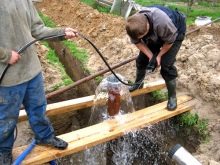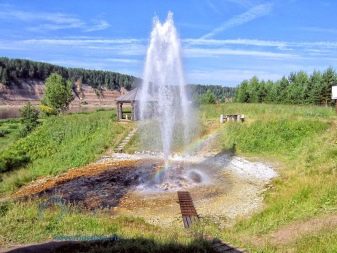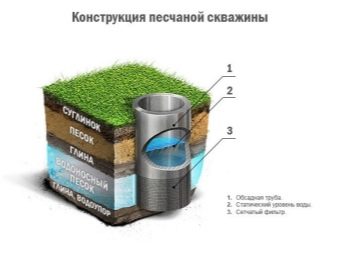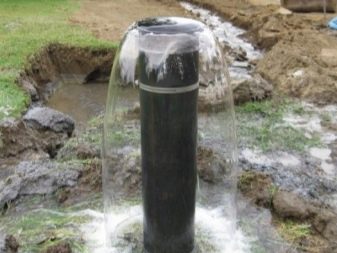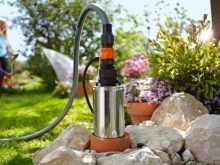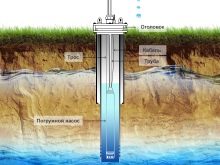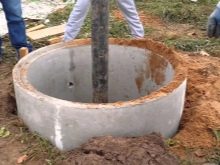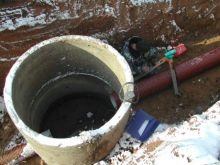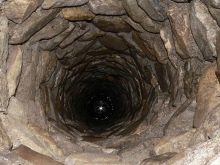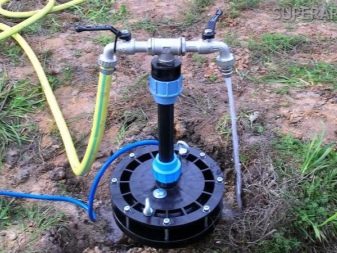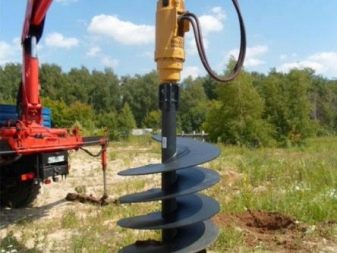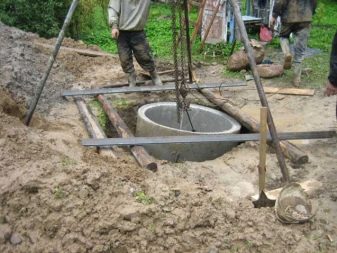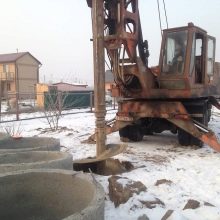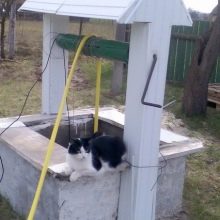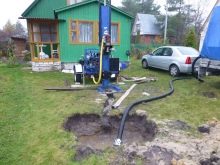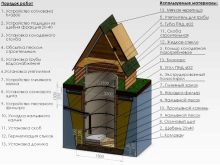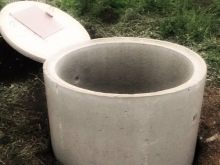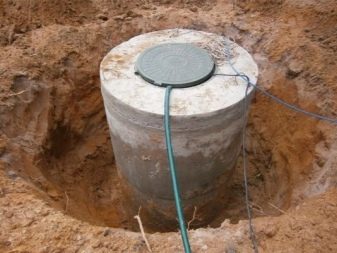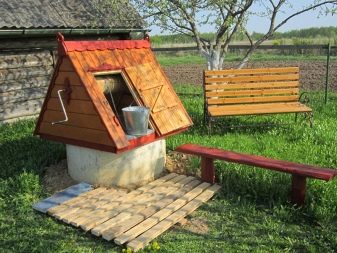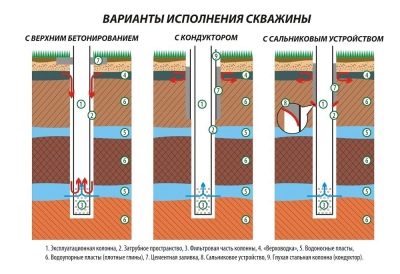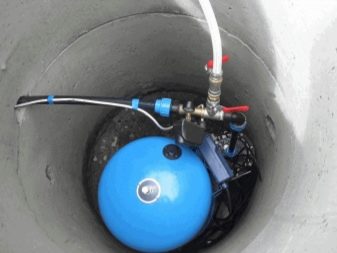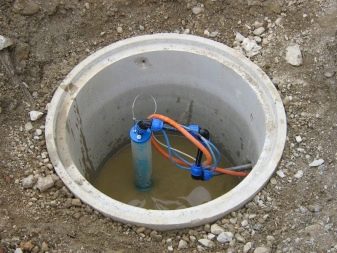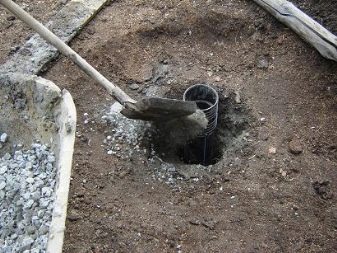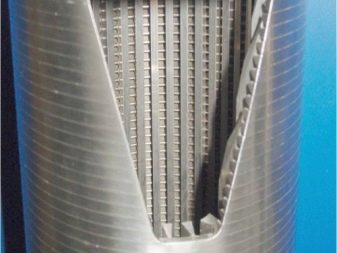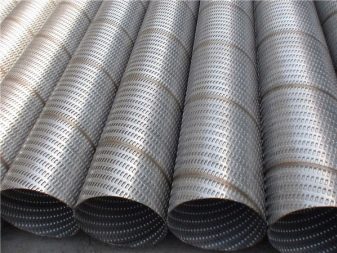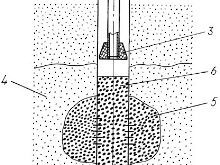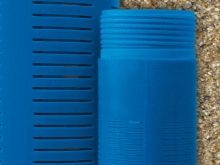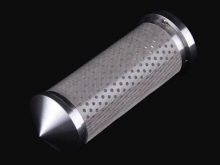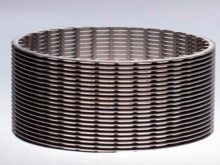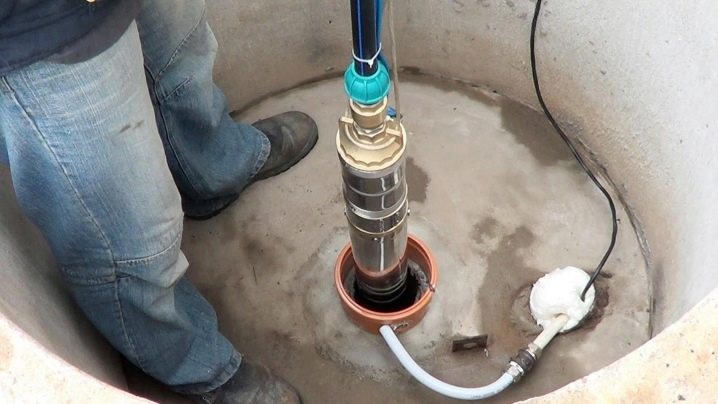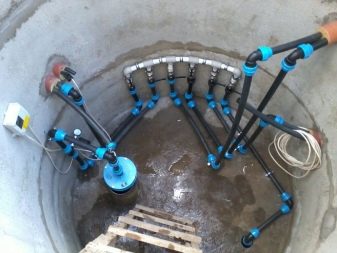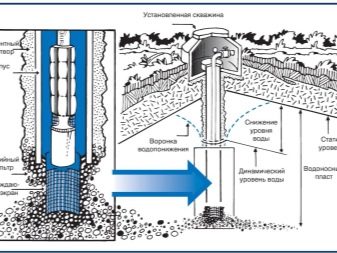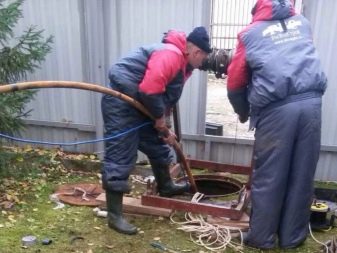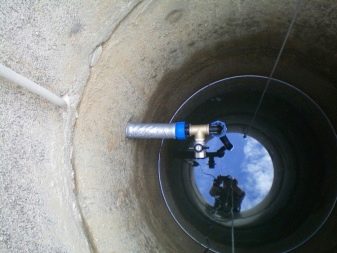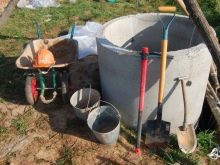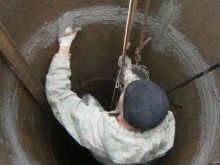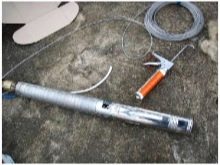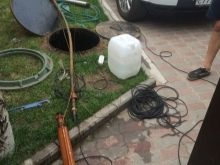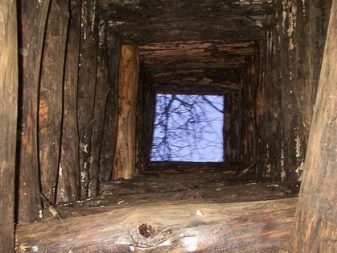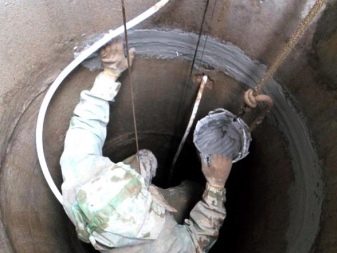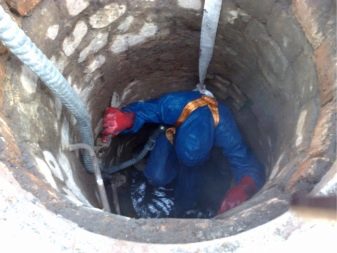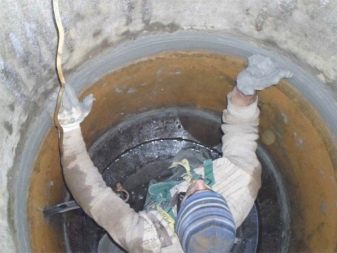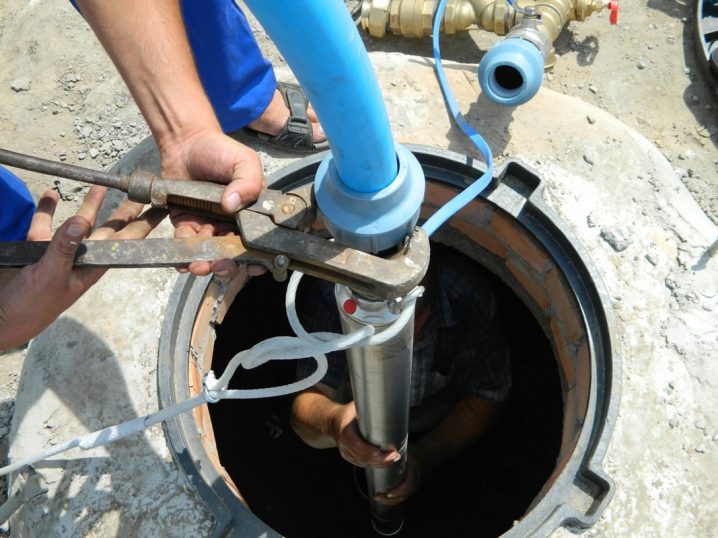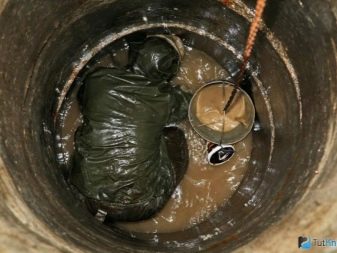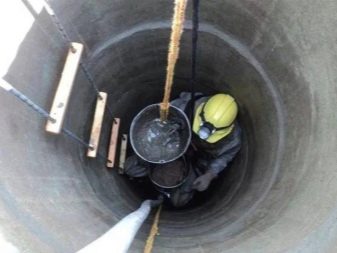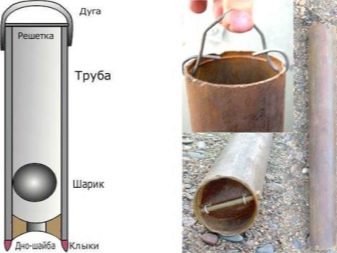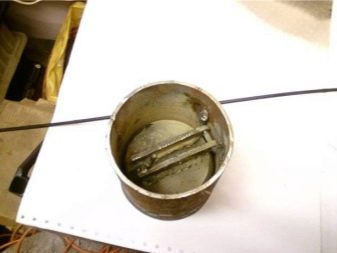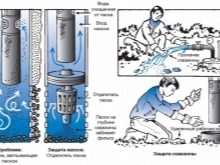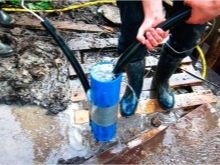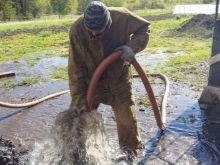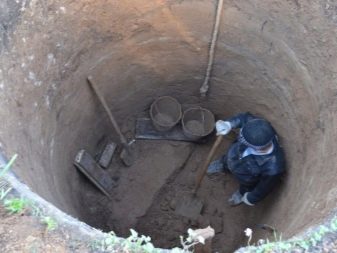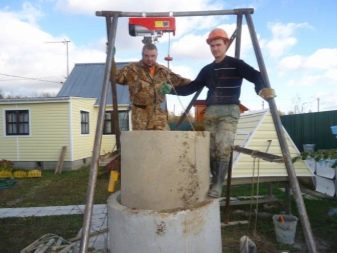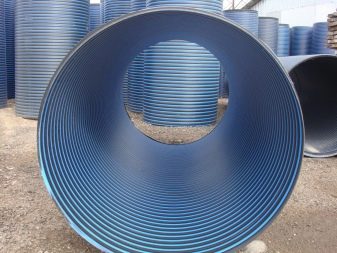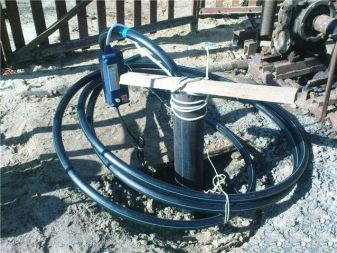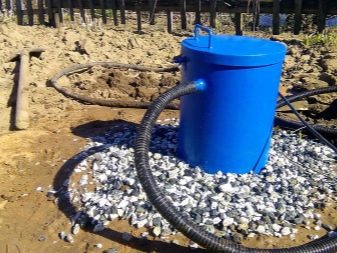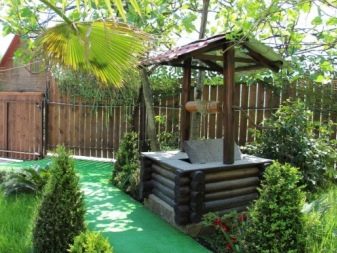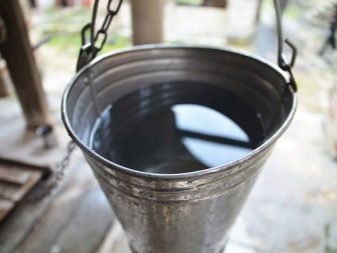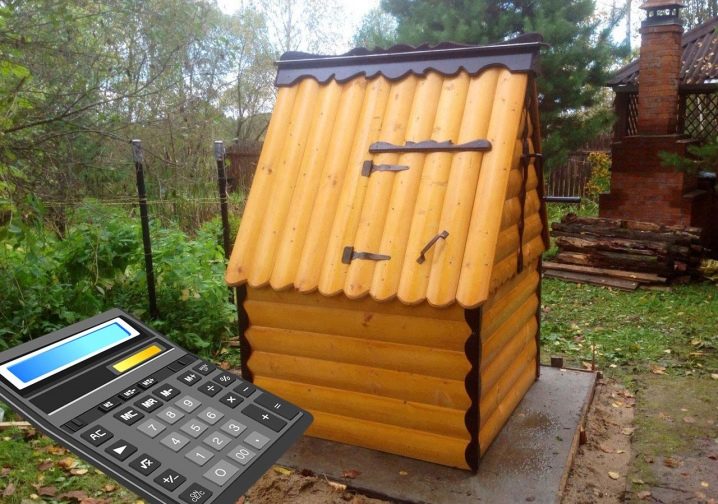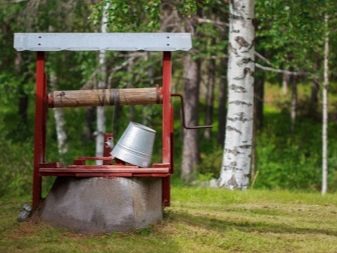Repair of wells and wells: features and differences
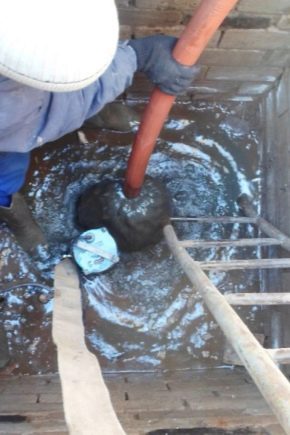
Water supply is one of the indispensable components of human life, because without it it is impossible to live comfortably both in the house and in the apartment. Water is usually used for drinking and cooking, for maintaining good hygiene of everyone who lives in the house, as well as for heating systems. It should be noted that the water supply system consists of pipelines, mixers and various types of filters, as well as valves.
Special features
Individual water supply systems are not easy to install, as they need to create a direct source of water.This issue can be resolved either with a well or with a well.
Wells can be of two categories:
- sandy;
- artesian.
At a sandy hole, the diameter can be from 3.5 cm and more. It is considered to be less deep than the artesian one, and its filter is located in a sandy aquifer. The depth of the well can reach 25-50 m.
If we talk about the artesian version, then its diameter will start from 12 cm, and the depth will be 50-100 m, or even more.
During operation of the well, the pump constantly pumps water out of its barrel, and the new water passing through the filter, again under pressure, enters the wellbore. The mechanism works so that the water intake is always compensated by a new fluid. For this reason, the water in the well is always in contrast to the well.
For a long time, the well was the main source of water, which was in the aquifer closest to the surface. As a rule, the wells are round. Their diameter is about half a meter. Rectangular wells can be found extremely rare.
As a rule, the well passes through the water layer and goes deeper into the solid layer, which is located just 0.5-2 m below it. To raise water from there, either electric pumps or hand-held devices are commonly used. Water gradually flows from different horizons and, accumulating in the well, is stored there in the required quantities. If you pump out all the water from the well, then a new one will appear there only after a certain period.
It should also be noted that they need repair from time to time.
Similarities and differences of designs
The similarity of both options lies in their appearance. Someone will say that they have the same purpose. But it is not.
The fact is that the well cannot be used for anything other than to obtain drinking water. The main reason for this is that the water in the well is not replenished immediately, but gradually, so it will not be possible to use it for industrial purposes. But the well can be used for industrial purposes, as there is more water here, and it comes in better.
Well and well are different in depth. The average well depth is about 50-55 meters, and the well is no more than 9-10 meters. Another difference is in diameter - it was discussed above. In addition, there is a difference in the quality of water: the well is fueled by the water pipe, and the well collects water from limestone or sand.
Device
Naturally, the device wells and wells, despite a certain similarity, has more differences, given the difference described above. It is necessary to highlight both of these points in order to clearly understand what failures can occur in either case.
Well
There are two types of wells:
- drilling rigs;
- mine.
If we talk about the mine wells, they are structures whose diameter is up to three meters, and the maximum depth of the gasket is up to 16 m. For their construction, water pipes are used from materials whose durability is quite high. They provide the opportunity to provide the best protection layer, which is aquifer from dirt.
Constructions with the use of concrete rings, as well as bricks and reinforced concrete structures are in demand. At the bottom, a sand-gravel filter is usually made, and the tip is protected by a clay castle. For water supply, a surface or submersible pump is used.
From above, such wells are usually covered with a wooden frame or structure made of wooden elements. If we talk about drilling wells, such hydraulic structures consist of a water intake well, which has a bottom filter, as well as a water pipe and a pump.Also, the structure is strengthened with a casing of polypropylene, asbestos-cement or metal pipes. The so-called Abyssinian wells also belong to the drilling wells.
It should be noted that any well, even underground, whatever it was on the device, has a clear plan, which includes three elements:
- well head;
- mine shaft;
- the intake part.
The head of the well is the upper part of the building, which is designed to lift water from the depth, as well as protect the mouth from sewage and precipitation. It may consist of the following elements:
- lift gate;
- blind areas;
- clay castle;
- shed or roofing;
- various amenities - tables, benches, shutters.
The shaft of the mine is a space under the ground between the tip and the bottom, where water accumulates. Through this space is the rise and transfer of water to the consumer. It consists of a casing, which serves to protect the mine from collapses, and does not allow unwanted fluids to get inside and spoil the supply of drinking water.
The receiving part is a reservoir where water is accumulated and stored.In addition, it is here that it is settled and filtered. This element consists of a bottom filter and the bottom of the casing.
Well
The device of wells is made of several basic elements, which allows it to easily give access to water from water layers. The first element is casing. They are used to strengthen and seal the wellbore, usually made of asbestos cement, metal or plastic.
Metal pipes are usually made of stainless or ordinary steel. You can also find enameled and galvanized pipe types. They are usually connected using couplings or using a welding machine.
Recently, low pressure polyethylene pipes, which are often used in wells on sand, have also become popular.
The next required element is the bottom filter. It is usually located at the bottom of the casing, and it always sinks into an aquifer. You should know that there are several types of filters:
- gravel
- slotted;
- reticulate;
- perforated;
- wire.
Gravel The variant is the simplest type, which is created by fine grained gravel well.Such a pillow does not allow for the intake of the solution in the well and reduces the load on the pump and casing.
Slotted Variant is a simple device with a wall of the casing, which has perforations in the form of thin cuts. Due to the presence of narrow gaps, water seeps well, and small particles of sand do not pass through them.
Reticulate the filter is similar to a fine mesh made of corrosion-resistant materials, which perfectly resists abrasion. The main drawback is high resistance to water flow. Sometimes this causes a lack of water in the source.
Perforated the option is used where high strength is required. It is a pipe with a large number of round drilled holes. Perforated filter is used in sources with a small feed volume and low pressure.
Wire the filter is made of stainless triangular wire wound in dense rows on a perforated casing pipe.
Major issues
Below are the main problems faced by the owners of wells and wells.
A well can be considered faulty if the color of the water has changed, its quality, a characteristic odor has appeared, it has become less, and also in the case when a fresh one takes a long time after pumping the water out. In this case, you should check the performance of the whole structure.
In addition, problems often arise because of poor-quality well completion.
The main causes of problems may be the problems described below.
- Wrong selection of equipment for lifting. In this case, one should expect the pump to open and re-run in the casing.
- Casing Cracks they say that during the construction there were deviations from the vertical, as well as distortions.
- Safety cable break may lead to a decrease in the amount of water supplied, as well as to pumping unclean fluid or breakdown of the device.
- Drop rate. This can occur for a number of reasons, for example, due to mechanical problems with pumping equipment or lowering the water level. Sometimes this problem may occur due to frosting of the pipeline, as well as a voltage surge in the electrical network.
- Dirt in the water. This cause usually appears when casing is worn.Metal pipes after some time become rusty and lose their tightness, and asbestos or plastic versions can simply burst. Also, this problem may occur due to contamination of the filters, casing or sealing layer between the walls of the wells.
- The appearance of an unpleasant smell. This factor arises due to the shallow depth of the well, as well as its leakage, because in this case pollutant substances can enter the well.
- Reduced pressure. In this case, the problem is not in the well itself, but in the system equipment. It is worth paying attention to the pump, water-lifting hose and pipeline.
- Silting Signs of silting are an increase in the time of water gathering, the appearance of particles of dirt in the water.
If we talk about wells, the main problems in this case are factors, which will be discussed below.
- Changes in water level and its care. This problem may be due to climate change. If the aquifer has descended on a pair of well rings, then this is not a problem. To eliminate this fact, you can add several rings of reinforced concrete or make a small deepening of the mine.
- Shift well rings. This problem may occur due to freezing and subsequent movement of the soil. In addition, its cause can be the usual depressurization of seams, which can contribute to the ingestion of foreign objects - earth and dirt. As a result, the garbage accumulated on the bottom will start to rot.
- Unsealed seams. This usually happens most often for two reasons: poor-quality cement was used in construction, or the cement-sand mixture was thinned and eroded.
It is this list of problems with wells and wells that can be considered major. Of course, other problems may arise, but they will depend not on environmental conditions, but on the influence of a person on the environment.
Instruments
In order to repair the well, you need a few tools. A rope ladder, safety harness, swings, slings and some other tools will be needed. Of course, everything will depend on the financial possibilities of the owner.
Bottom-line insurance is required. If it is not possible to purchase a lifting unit, you will need an assistant who will pull a person to the surface if necessary.You will also need a hook for the bucket with tools, and you can use a winch or a block for lifting and lowering a person as a lifting unit.
To carry out repair or restoration work, you need a hydraulic seal and a metal brush to clean the seams from dust.
If we talk about the repair of wells, then we need several groups of tools:
- drilling - these include drill bits, drill pipes, lead pipe and other similar tools;
- hoisting - pipe elevators, spiders, keys manual, mechanical and machine, bails;
- lovilny and milling tools are latches and milling cutters.
How to repair?
Repair of the well must be carried out from time to time due to the fact that water acts on the walls of such a structure, and the ground may come into motion. If we talk about a wooden well, then both capital and current repairs in this case will be very costly, and from the moment when preparation for the work begins, it is necessary to build a structure for descent and ascent.
During the descent into the well, it is necessary to find the damaged area and replace the elements of the wooden frame, which have become unusable.To do this, place spacers at a certain place, after which it is necessary to select elements that need to replace worn logs.
After this, the structure is replaced and seized - this is done in order to prevent contaminants from the other side of the log house from getting inside.
The repair of a brick well is carried out in the same way. The only thing you should know, in this case, if necessary, you need to seal and seal the gap.
If we talk about concrete wells, their main problems are cracks between individual rings and their displacement relative to each other. In this case, the repair process must be carried out both internally and externally.
Internal repairs can be done with ordinary mastic, and for external repairs, you will need to dig a trench of the required depth. After that, a person, having sunk into it, must clean the concrete elements from dirt and dust, cover up the cracks with the help of a special compound. If the concrete rings are displaced, they can be partially dismantled. Then they are placed exactly and carefully fixed.
Repairing concrete rings is quite time consuming.Sometimes it is easier to replace them with special plastic rings.
If we talk about the repair of wells, the first thing to do is to determine the cause of failure. To do this, you should inspect the inner surface of the casing. It is best to entrust this business to professionals.
Inspection is carried out using a special probe, which houses a small video camera. The probe transmits the image not the monitor, which allows to identify the cause of the problem.
If we talk about the well repair scheme, in all cases it will be one:
- checking the condition of the casing;
- establishing the actual depth of the well;
- determining the level of water inflow from the formations located around the well;
- equipment repair;
- repair or complete replacement of the casing;
- start-up of the well after repair;
- water intake for microbiological and chemical analysis.
How to clean?
Repairs are not the only maintenance work that needs to be done with wells or wells. Another type of such work will be cleaning. It is impossible to do without it, because sooner or later various garbage and sludge gets into the wells, and filters can become clogged in the wells.
Cleaning the well must be done to improve water quality.Usually such cleaning is carried out in several stages.
The first stage consists in pumping out water and attentively examining the condition of the bottom and walls. If the walls are in excellent condition, without cracks and defects, then they just need to be cleaned. Cleaning is carried out with rigid brushes using a washing machine that supplies high pressure water.
This type of cleaning is also required in cases where the walls are damaged. After the removal of deposits, it is necessary to perform repair work.
After the cleaning of the walls is completed, it is necessary to start cleaning the bottom. This can be done with the help of ordinary buckets and shovels in order to collect dirt from the mine and remove it. Together with the dirt, the bottom filter or part thereof is removed. After completing the work, it should be poured anew - for this, first a layer of sand is laid, after which a layer of gravel is laid. Now it only remains to fill the well with water.
If we talk about the wells, the cleaning here will look like this: at first it is necessary to lower the shell on the bottom of the cable to the bottom of the trunk, then raise it to the level of 70 cm and lower it sharply. Thanks to the sharp protrusions, it is embedded in the sand and captures silt with water. During lifting, the liquid is drained and the sand is cleaned.
If it is required to clean the well using a water forcing procedure, then it is necessary to use a large amount of fluid and a pumping station. And this is not always possible.
The technology of air-lift purging is based on the flow of air into the well at a pressure of about 15 atmospheres. The principle here is that water is simply squeezed to the surface. However, with this technique there is a risk of filter breakage. This method will be an excellent solution for small wells.
The last method you can use is flushing. It can also cause filter damage. Here it is important to ensure normal pressure, which will be sufficient for flushing. You also need to find a place where you can drain a large amount of dirty liquid.
How to deepen?
If we talk about the deepening of wells and wells, then you should know that the need for such a procedure usually arises in the case when water supply interruptions begin. For wells, the most effective method is to build the wellbore bottom. To do this, it is necessary to prepare repair rings and check them for the presence of protrusions that may prevent them from being lowered into the tunnel.
After that, all the rings are connected by metal plates to protect the integrity of the column. Now you need to pull out the bottom filter from the day. The next thing to do is to dig a tunnel of smaller diameter for repair rings. This process is carried out until the walls begin to crumble.
Repair rings go down to the new tunnel and fasten with each other. After this, the tunnel continues to be excavated and the installed and fastened part of the repair column is lowered into it, and new rings are built up from above. To connect the old and repair trunks used angle brackets. Now it only remains to pour in the bottom filter and seal the connection.
If it is necessary to perform well deepening with your own hands, then it is best to do it with the help of drilling equipment. But for this you need to follow certain rules. When the desired depth is reached and access to the new aquifer is obtained, it is necessary to lower the pump and plastic casing. This will make the well work better.
To get water and deepen the well, you can also use the method of dismantling old rings.
To do this, simply remove the worn rings and expand the pit that is formed. After this, the pit deepens and new rings are installed. But this method is fraught with the danger of destruction of the entire structure.
Another option is to draft rings using a load. This technique can be applied in the case when the rings are new and were dug out only a few months ago. But if the soil has already managed to shrink, then evenly precipitate the structure does not work - this can cause a rupture of the trunk. Therefore, with the use of the last two techniques, one should be extremely careful.
Tips
If you need a water source, for example, at the dacha, then installing a well will be a simpler solution, since there are significantly fewer works with it, and the well requires more serious technological research. At the same time, water from the well will be significantly cleaner, and the risk of blocking the water flow will be less due to the greater depth and distance of water from various infrastructure facilities that may cause pollution.
There is no need to prepare documents for the well, but sometimes you have to do documentation for the well, but only when it comes to exceptionally great depth.
At the same time, the water level in the well does not fluctuate from season to season, as is the case with a well. Also, the well, despite its durability, requires constant care and maintenance. At the same time, the well does not require such serious care and frequent maintenance.
If viewed from a financial point of view, a well is a more affordable option than a well. Moreover, sometimes the cost of a well exceeds the cost of a well. But the reason is simple - the complexity of drilling and the need to attract specialized drilling equipment.
You can make sure that repairing wells and wells with your own hands is quite realistic. Before carrying out the work, it is necessary to clearly understand the algorithm of the necessary actions and to know what exactly you have to deal with, as well as what result you want to get. But even a person who has not previously encountered such work without any special work can do the repair of a well or a well.
From the video below you can learn how to clean the hole from the sand.
